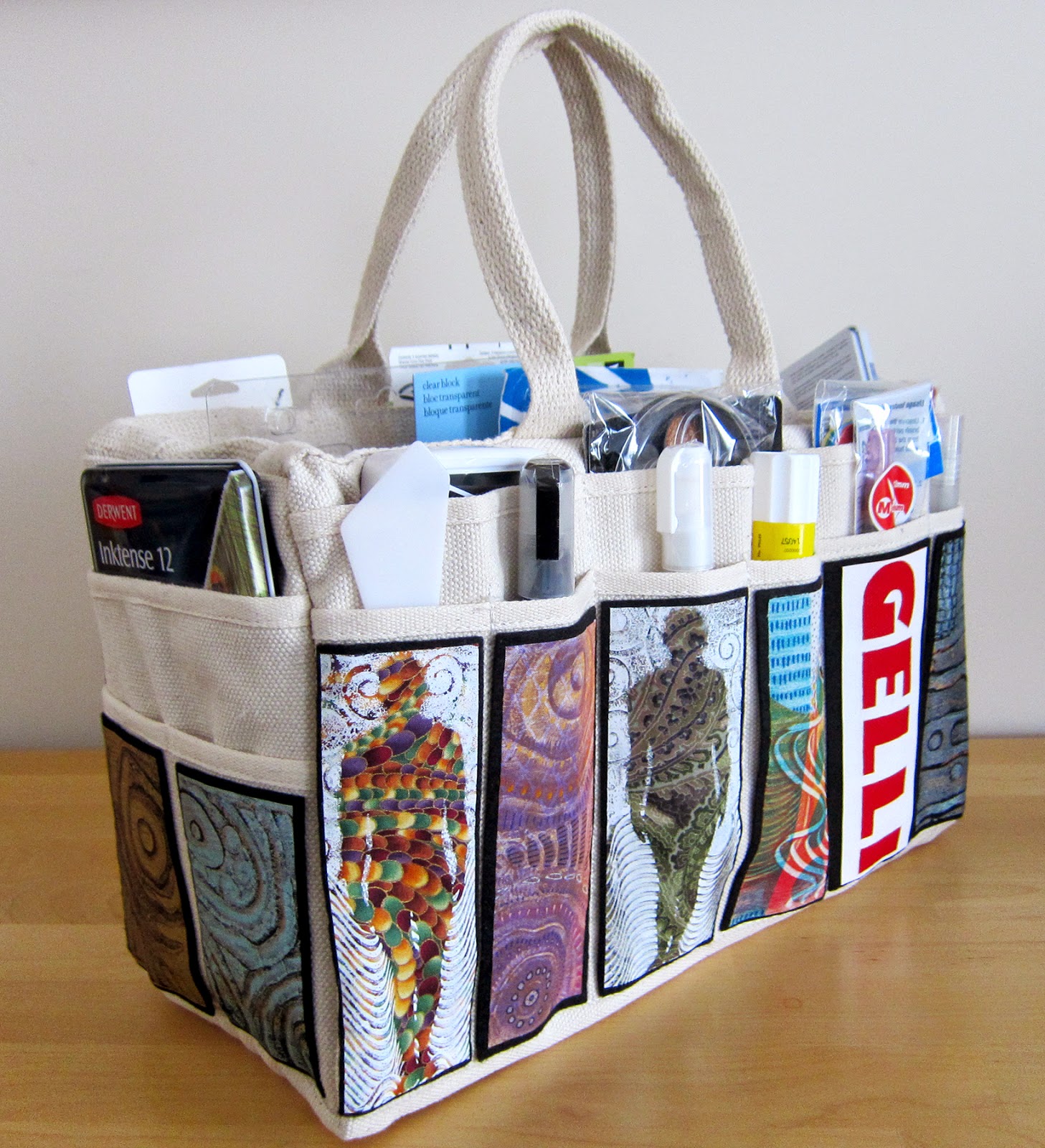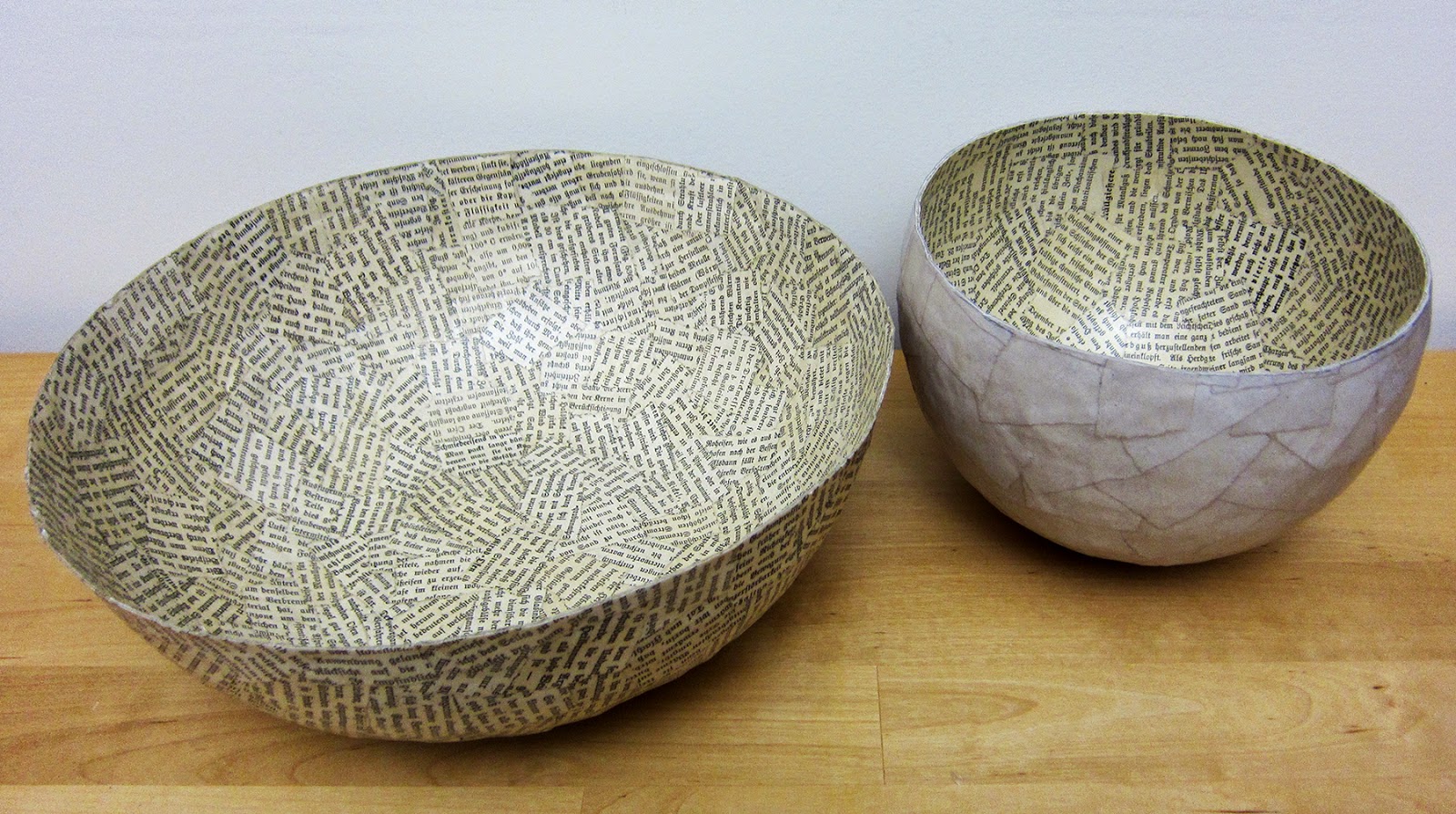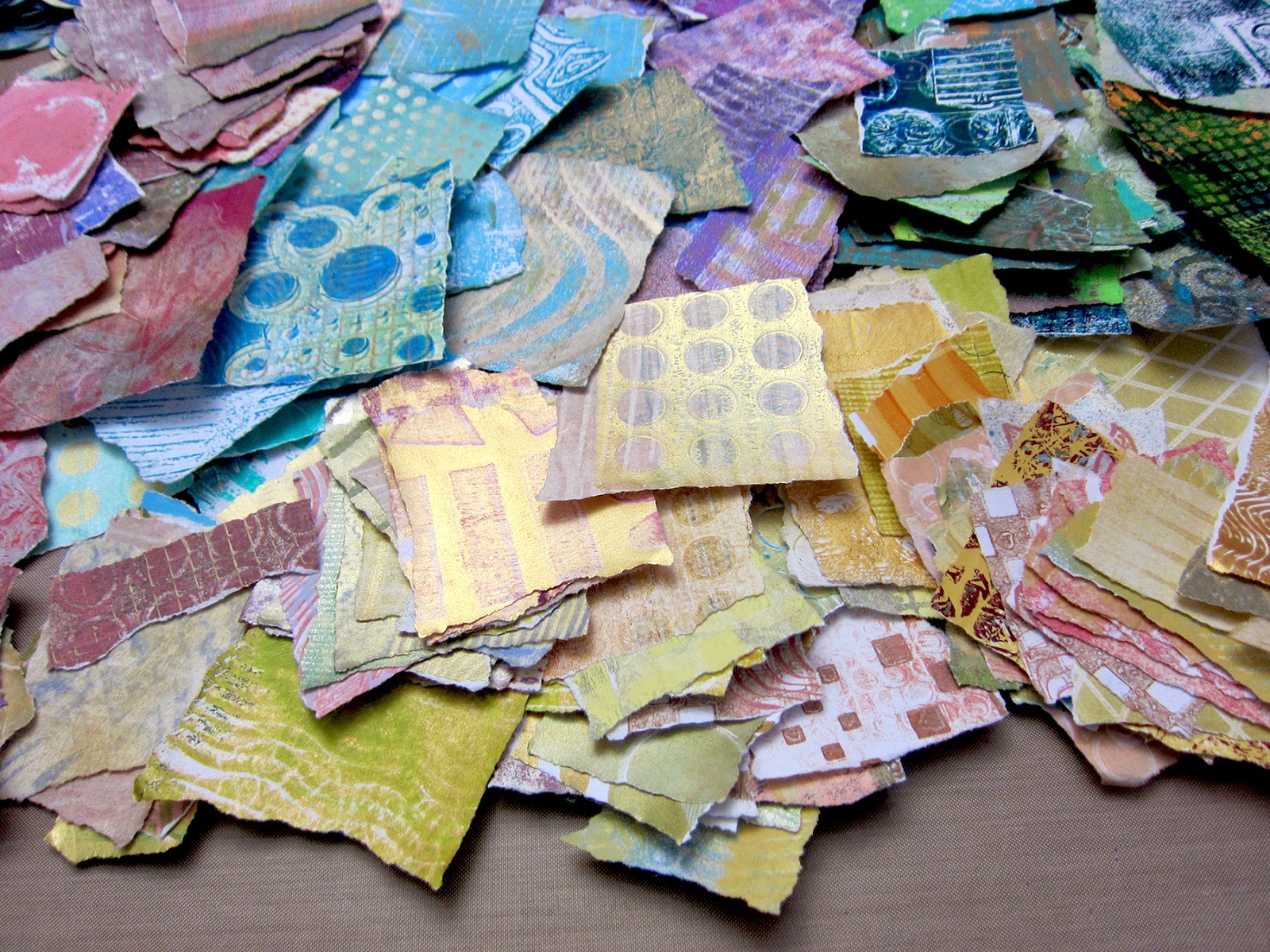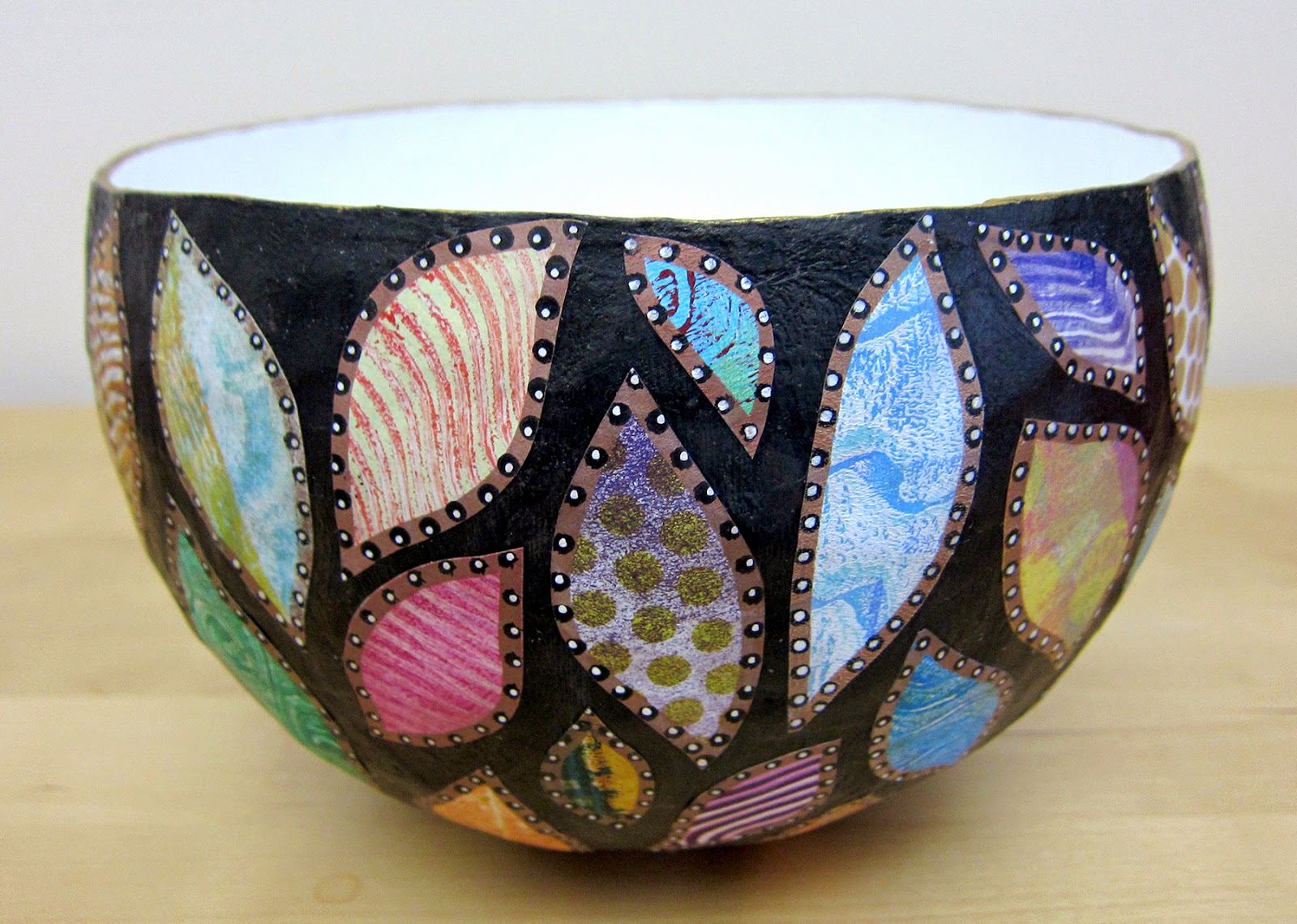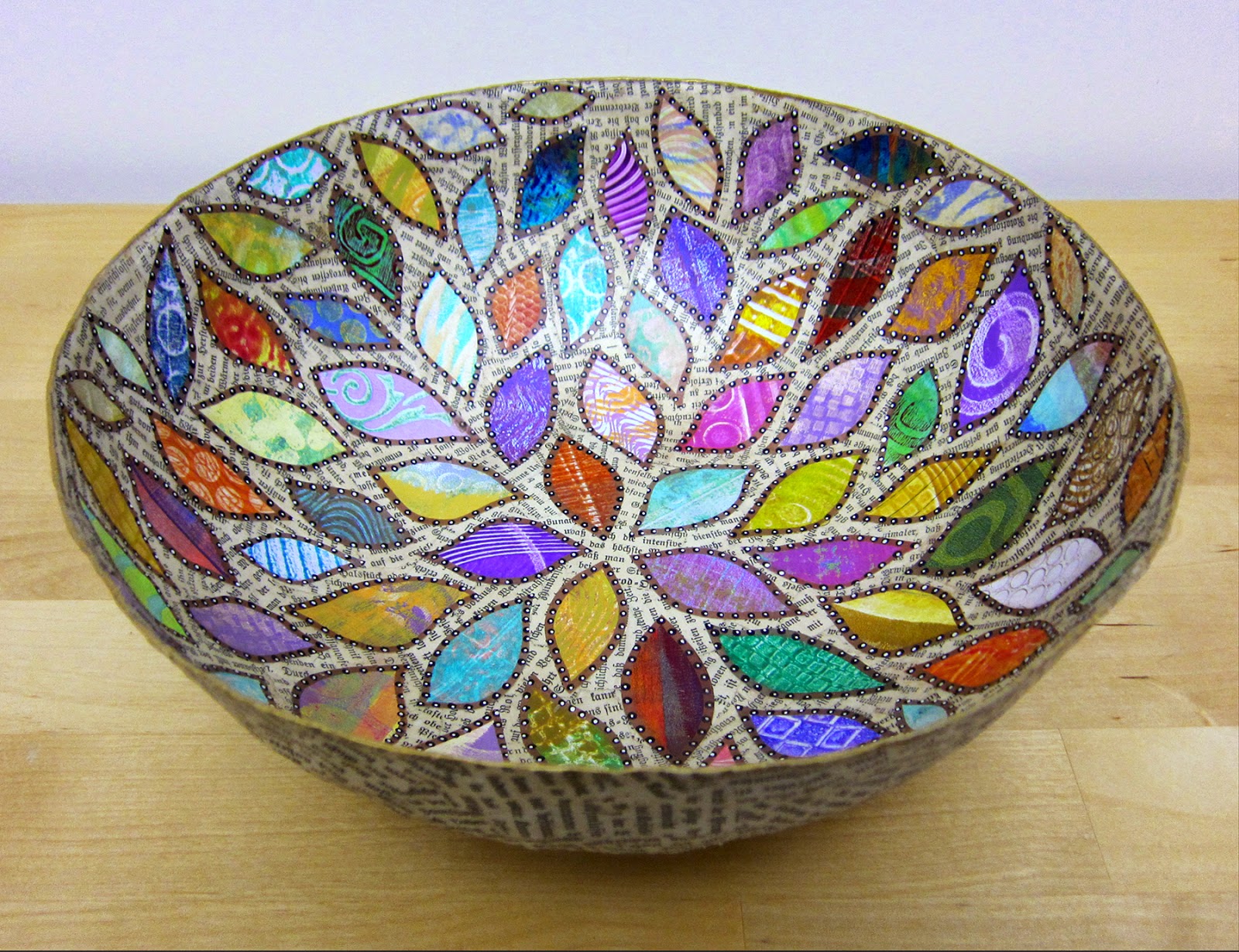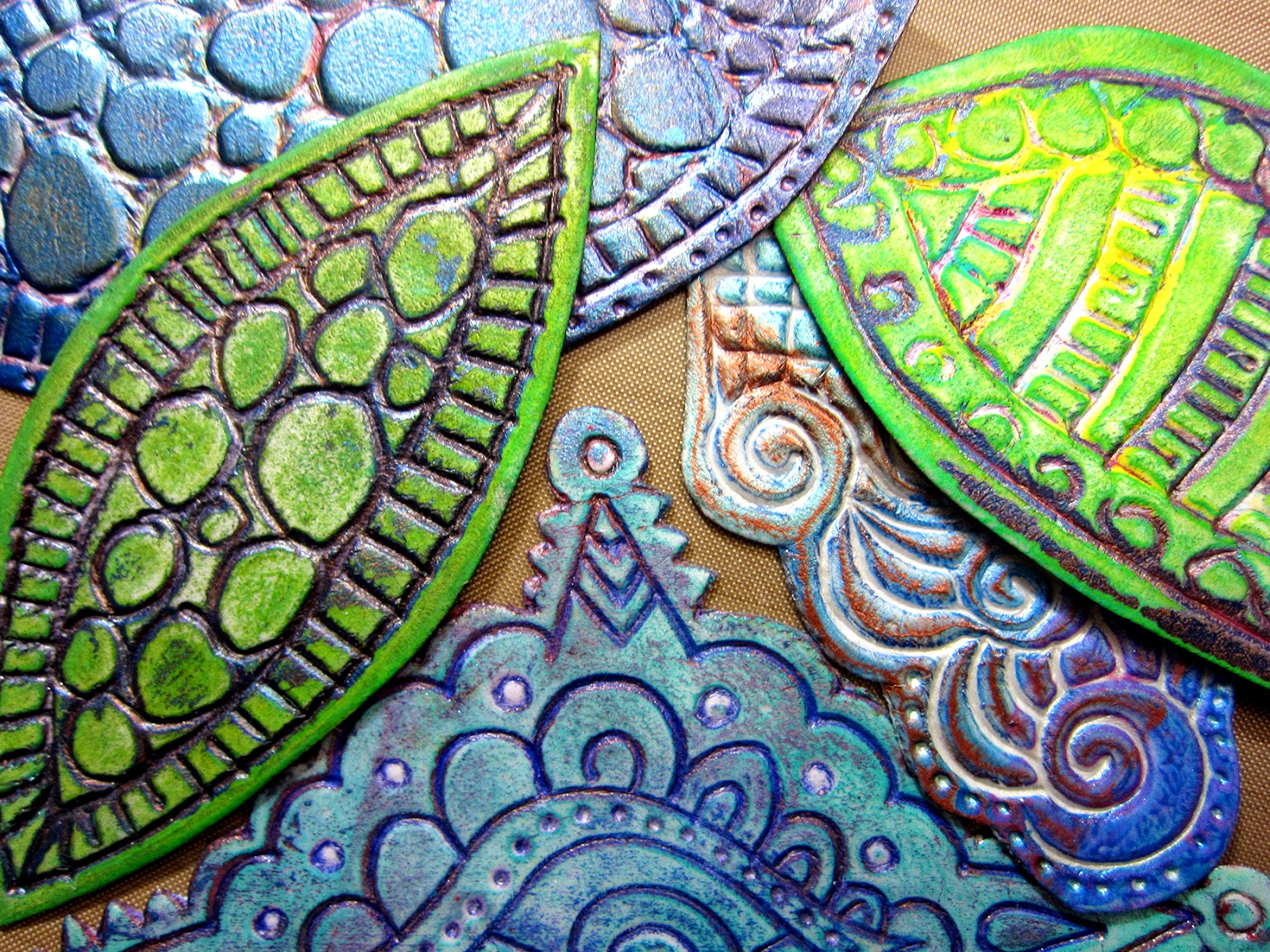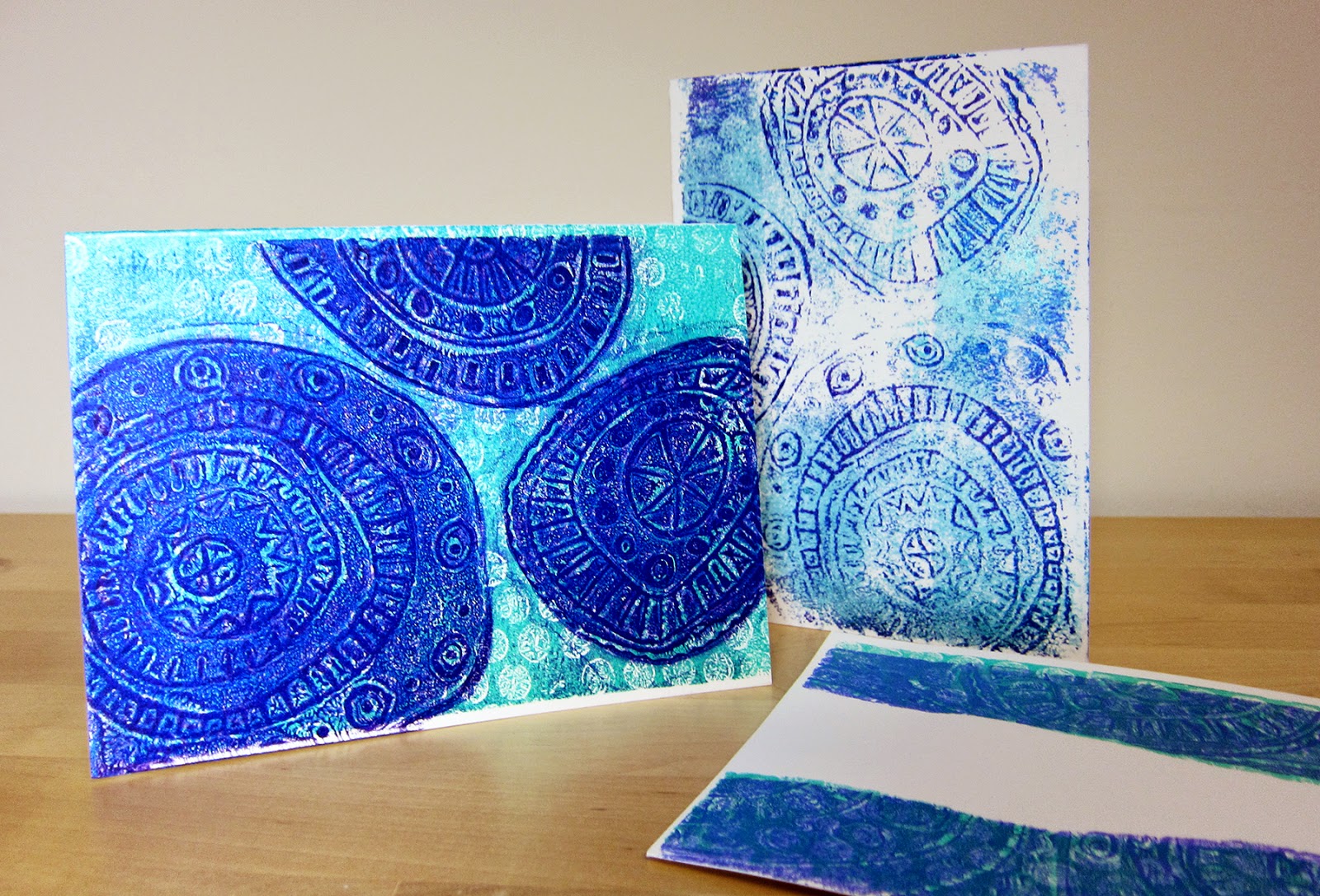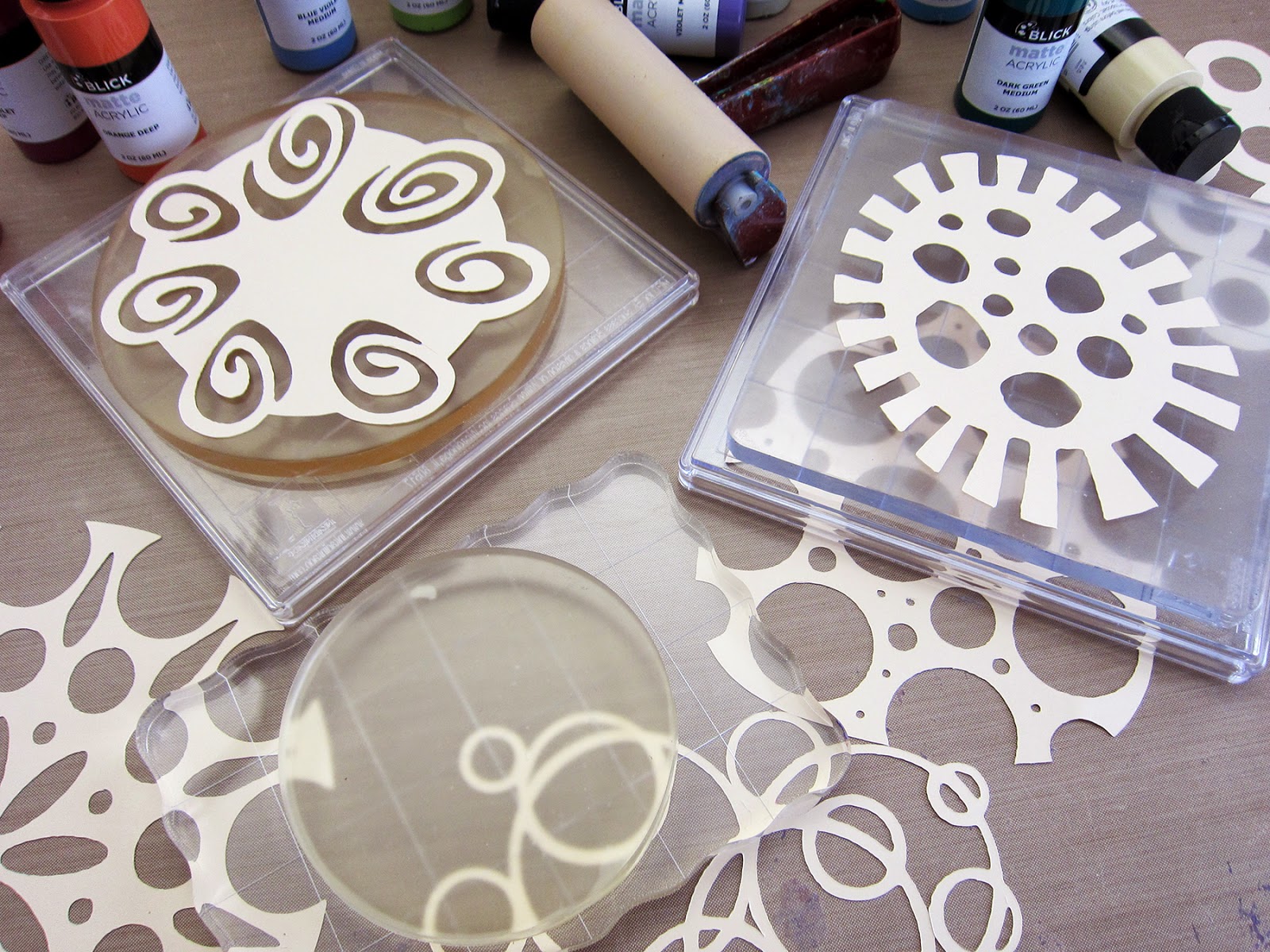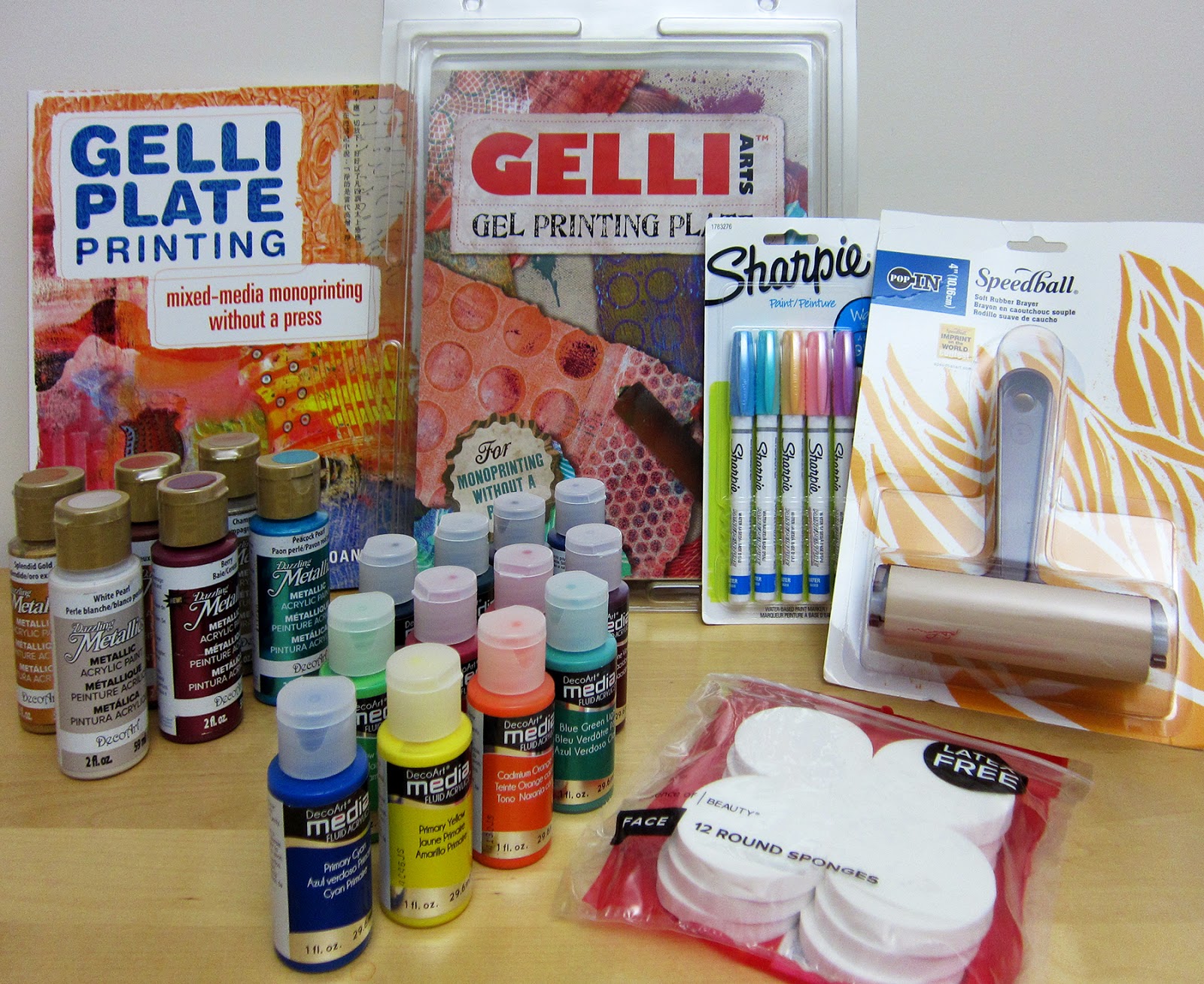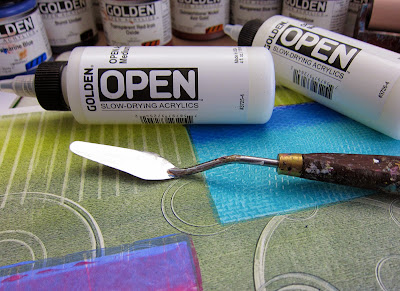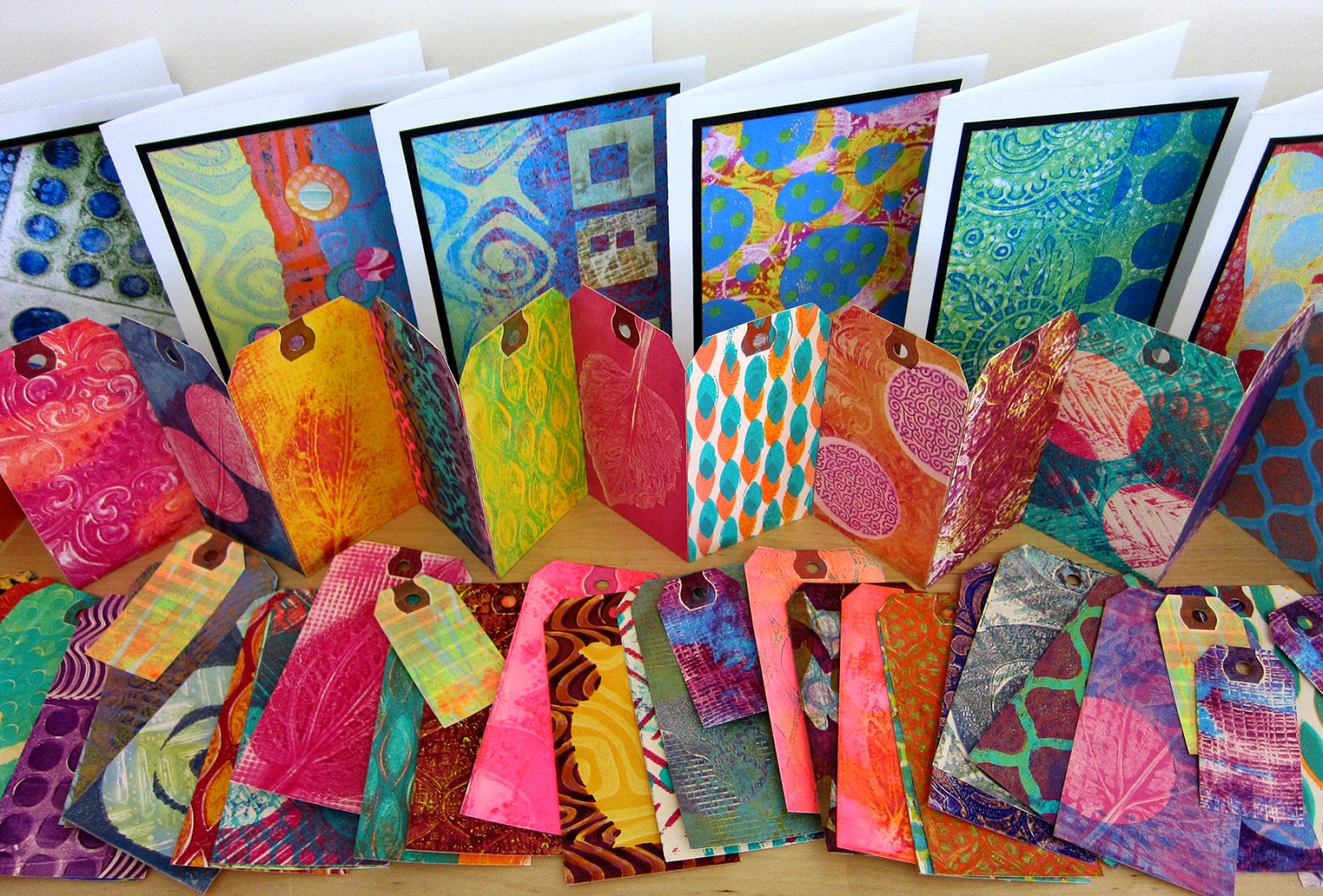If you have stacks of Gelli™ prints and are looking for some fun ways to use them... how about making some Artist Trading Blocks! If you like to create small collages—Artist Trading Blocks (ATB's) are a perfect substrate! Each block gives you SIX small surfaces to cover!
There are no rules, so any block will do. Many artists choose to make a block, or cube, from chipboard or matboard. Templates for making boxes are easy to find. Or you can construct a cube from book board to the size you want. But I especially love wood blocks, so that's what I used.
Luckily, I had a renovation project going on and my contractor was kind enough to cut up a 4x4 post and supply me with a bunch of 3-1/2" square wood blocks.
I sanded them and filled the rough surfaces and imperfections with molding paste. When they were dry, I sanded them again and gave each surface a coat of gesso. These blocks are heavy and have a nice solid look and feel.
Here's how to create the collages:
- Cut six squares of heavy paper stock or bristol, each slightly larger than the block's surfaces. I used Strathmore Bristol(Smooth)—it's a great collage substrate.
- Select Gelli prints to create backgrounds for the collages. Tear or cut printed pieces, then arrange and glue to the bristol.
- Glue a collage background to a side of the block. Place the block on a cutting mat and carefully trim the paper against the edges of the wood block with a craft knife. Do this for each side.
- Build a collage image on each background—and glue the pieces in place.
- If desired, add details with colored pencils, metallic paint pens, rubber stamps, and your favorite embellishing techniques.
- Color the edges with permanent ink or paint. (I swiped the edges with a StazOn ink pad—Saddle Brown.)
- When the piece is complete, you may want to varnish it. The smooth block begs to be handled!
I found my theme for this ATB when I came across a circle I had punched out from an old book titled, Substance of a Dream. So my plan was to create a dreamscape collage on each side of the block, each including a sphere or circle image. It's a bit like the process for creating content for an artists' book—the six sides lend themselves to presenting a narrative or taking a thematic approach.
ATB's don't have to follow a theme—they look fabulous as decorative blocks, covered with some of your favorite Gelli prints! Make a bunch! Mix up the sizes! Cover assorted small wood blocks from the craft store! It's addicting!
NOTE: I used several coats of DecoArt Satin Varnish on this block and loved the way it intensified the colors. However, it was a bit too shiny to photograph without glare, so I added a final coat of DecoArt Ultra Matte Varnish to eliminate the shine. The block ended up with a lovely matte finish and the artwork is completely sealed and protected.
Wood blocks are perfect for further altering, like hammering embellishments into them. Lots of ATB's are covered in dimensional embellishments. Many are built up with pieces added on, such as feet, finials and all sorts of found objects. Some are constructed into a stack of multi-sized blocks, which can be glued together... or not. So many possibilities!
This Contest is officially CLOSED
And for a fun and different giveaway... I'm offering my Artist Trading Block, 'Substance of a Dream'—shown in this blog!
To enter the giveaway, click on the red 'ENTER GIVEAWAY HERE' button below! (This will ensure that we can contact the winner and that entries are limited to one per person. One winner will be selected from all the entries via a random number generator to win this fun giveaway!)
Entries will be accepted until Friday, Nov. 7th at 12 pm EST. Our lucky winner will be contacted by email and announced here on the blog and on our Facebook page no later than Friday, Nov. 7th at 5 pm EST!
This Contest is officially CLOSED
Please leave a comment below and share your thoughts! We love hearing your feedback!
Good Luck and Happy Printing!






















